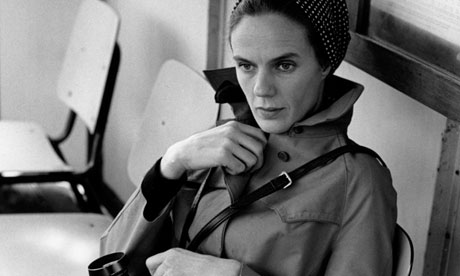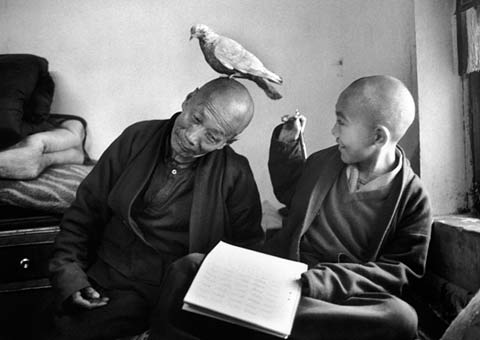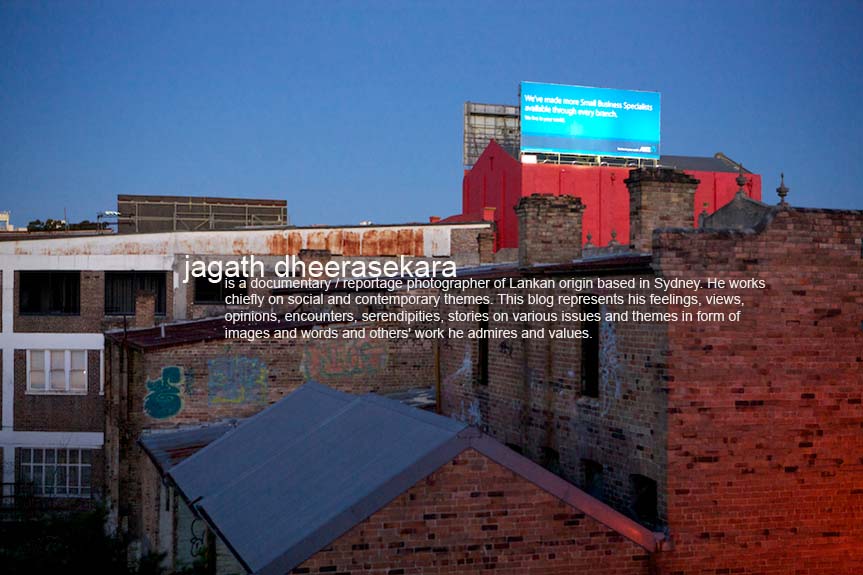
Martine Franck in 1972, photographed by her husband, Henri-Cartier Bresson. Photograph: © Henri Cartier-Bresson/Magnum Photos
Martine Franck, who has died aged 74, was a photographer of great contrasts. She started out by taking pictures in Asia, a continent she revisited for weeks at a time, but she also devoted herself to documenting daily life close to her homes in Paris and the Luberon, Provence. Her work is characterised by a fascination with the little intimacies and interactions in the lives of anonymous poor, marginalised and elderly people, yet she also assembled a matchless portfolio of portraits of famous authors and artists, including Seamus Heaney, Marc Chagall and Diego Giacometti.
Franck never adhered to the opinion professed by her fellow Magnumagency photographer Eve Arnold that all photographers are obliged to be intrusive. Ever modest, she said: "I think I was shy as a young woman and realised that photography was an ideal way of expressing myself, of telling people what was going on without having to talk." In 1970, she married the celebrated French photographer and co-founder of the Magnum agency, Henri Cartier-Bresson. The couple collaborated on a series of portraits of the artist Balthus, as retiring by temperament as Franck herself.
She was born to a Belgian banker, Louis Franck, and his British wife, Evelyn, in Antwerp. With the outbreak of hostilities in 1939, her father, who made his career in London, joined the British army. The rest of the family was evacuated to the US and spent the war on Long Island and in Arizona. She was educated in Europe, and studied history of art at Madrid University and the Ecole du Louvre in Paris.
Writing her thesis (on Henri Gaudier-Brzeska and the influence of cubism on sculpture) convinced Franck that she did not wish to be an academic or a curator, but a photographer. Her father had moved in artistic circles and one of her first portraits was of the sculptor Etienne Martin emerging from a cave smeared with clay. In 1963, she went to China, taking her cousin's Leica camera with her, and discovered the joys of documenting other cultures. Returning home via Hong Kong, Cambodia, India, Afghanistan and Turkey, she paused to visit the theatre director Ariane Mnouchkine and bought her first camera in Japan. She kept to a Leica, and predominantly used black-and-white film, throughout her career.
Returning to France, she worked as a photographic assistant at Time-Life while developing her own technique. Her early mentors were Eliot Elisofon and Gjon Mili, yet she also cited dramatically different female photographers as influences: Julia Margaret Cameron, for her portraits, and Dorothea Lange and Margaret Bourke-White. Lange's social conscience was reflected in Franck's project on old people's homes for the Petits Frères des Pauvres association. Bourke-White's love for play of light and geometric shapes is embedded in arguably Franck's single most perfect image, that of the bathers at the poolside at Le Brusc, Provence, taken in 1976. She described her experience of capturing it: "I remember running to get the image while changing the film, quickly closing down the lens as the sunlight was so intense. That's what makes photography so exciting." A moment later the positions of all five figures and their shadows on the white tiles would have irrevocably altered. The image has stood the test of time and was used as the cover shot for her book in the series I Grandi Fotografi in 2003.
Franck's work was used in Life, Fortune and Vogue, for which she shot portraits of women in public life, including her fellow photographer Sarah Moon and Mnouchkine, who made Franck the official photographer to her Théâtre du Soleil. Franck's fascination with masks and disguises found an outlet in Mnouchkine's ambitious deployment of kathakali, kabuki and commedia dell'arte. Their collaboration led to Franck experimenting with colour photography, which she used to capture theatrical productions such as Robert Wilson's ethereal version of Fables de la Fontaine at the Comédie Française in 2004. Franck's love of the theatrical could transform her quiet unobtrusiveness.
 Tulku Khentrul Lodro Rabsel, 12, with his tutor in a Nepalese monastery taken by Franck in 1996. Photograph: © Martine Franck/Magnum Photos
Tulku Khentrul Lodro Rabsel, 12, with his tutor in a Nepalese monastery taken by Franck in 1996. Photograph: © Martine Franck/Magnum Photos
In 1966, Franck met Cartier-Bresson, who epitomised Magnum's tradition of humanitarian photography. Franck was adamant that she would neither bask in his reflection nor disappear in his shadow and she joined the Vu agency in 1970. Her first solo exhibition was planned for the ICA in London that year; when she saw that the invitations were embossed with the information that her husband would be present at the launch, she cancelled the show.
With Vu's demise, Franck co-founded the Viva agency in 1972. It also collapsed and it was not until 1980 that Franck joined Magnum, becoming a full member in 1983. She was one of the few women to be accepted into the agency and served as vice-president from 1998 to 2000. Eschewing the war/human tragedy reportage that characterised Magnum's reputation, Franck continued her projects on marginal or isolated lives. When I first met her, in the 1990s, she had just completed her book on Tory Island, a "small rock" off the northern Irish coast with a population of around 130 Gaelic-speakers, where she lived in order to document their way of life.
Always a feminist, Franck was not above picking a grandiose book title – such as Des Femmes et la Création. It is typical that one of her final projects involved three weeks spent visiting small villages in Gujerat, western India, documenting young girls embroidering their own dowries.
As well as their homage to Balthus, Franck and Cartier-Bresson undertook a joint project in the Soviet Union. Franck also created a small book of portraits of her husband. Among the most memorable of this similarly shy and elusive character is that taken from behind, showing the back of his head. His reflection in the square mirror before him is repeated in the self-portrait he is sketching: a reflection on a reflection. Franck never used him as mentor or protector but warmly concluded: "Henri was both critical and inspirational as well as warmly supportive of me as a photographer." They had a daughter, Melanie, another reason for Franck to operate close to home when possible.
Franck's brother, the photographic curator and collector Eric Franck, affirms: "Henri was always very generous in encouraging her work, something she respected greatly." Franck's sister-in-law, Louise Baring, adds: "What was so extraordinary about Martine was that with subtlety and grace she could both be a great photographer herself and at the same time honour her husband's tradition."
She worked hard to launch the Fondation Henri Cartier-Bresson in 2002; Henri died two years later. In 2005, she was made a chevalier of the Légion d'Honneur. After her diagnosis with bone marrow cancer in 2010, she continued showing her work, and had exhibitions earlier this year at the Howard Greenberg Gallery in New York and at the Claude Bernard Gallery in Paris.
She is survived by Melanie, three grandchildren and her brother, Eric.
• Martine Franck, photographer, born 3 April 1938; died 16 August 2012

No comments:
Post a Comment